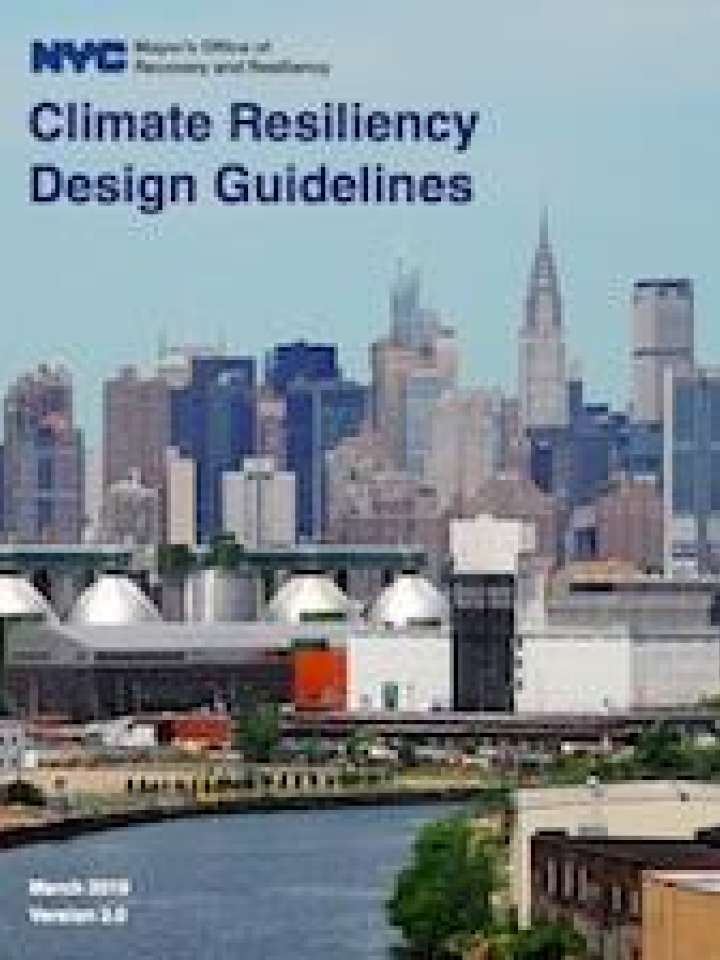USA, New York City: Climate resiliency design guidelines
These guidelines provide step-by-step instructions on how to supplement historic climate data with specific, regional, forward-looking climate change data in the design of New York City's facilities. Resilient design is intended to become an integral part of the project planning process for city agencies and designers. All new projects and substantial improvements should assess risks to climate change hazards in the context of the project’s purpose, asset type, site location, and funding, and then determine the appropriate resilient design strategies using the guidelines.
This document is based on the premise that a successful resiliency strategy provides co-beneficial outcomes, reduces costs over the life of assets wherever possible, and avoids negative indirect impacts to other systems. Resilient design should not exist in a silo, but rather be a well-integrated part of existing processes and address the other goals of New York City. Similarly, resilient design choices should maximize the efficacy and efficiency of investments. Some ways this can be done include: 1) integrating “soft” resiliency strategies (operational measures or investments in green infrastructure) and “hard” resiliency strategies (built or intensive investments); 2) addressing multiple climate hazards with single interventions; and 3) reducing climate change risk in concert with other goals.
The guidelines apply to all city capital projects except coastal protection projects (e.g. sea walls, bulkheads, and levees), for which the city is developing separate guidance. Implementing the guidelines will result in designs that will make city facilities more resilient to climate change and promote the health, safety, and prosperity of New Yorkers.
Explore further
